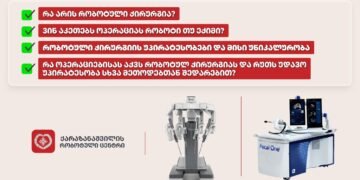A 24-month clinical study was conducted to compare the functional and oncological outcomes of robot-assisted laparoscopic prostatectomy versus open radical prostatectomy. The study revealed that neither approach showed superiority over the other, according to the authors.
The international research was led by Dr. Robert “Frank” Gardiner at the Clinical Research Centre of the University of Queensland in Brisbane and at the Royal Brisbane and Women’s Hospital in Australia.
The new results of the 24-month follow-up were published on July 12 in the oncology section of the online journal The Lancet.
As early as 2016, Medscape Medical News had reported that the 3-month findings showed no difference in functional and oncological outcomes between the two surgical approaches.
Likewise, the 6-, 12-, and 24-month follow-ups confirmed that functional and sexual outcomes were similar for both methods.
However, the authors note that “oncological outcomes still require long-term monitoring and further study.”
The researchers also highlight that 1 in 5 patients continues to suffer from significant psychological distress, regardless of the surgical method used.
“Robot-assisted laparoscopic prostatectomy is widely adopted as the preferred surgical technique for radical prostatectomy, yet its outcomes are rarely scrutinized,” write Gardiner and his colleagues. “Our study shows that this method provides functional results equivalent to open surgery over a 24-month period.”
The researchers urge caution when interpreting the oncological outcomes of their study, noting the lack of standardized post-operative management protocols for the two groups, as well as the possible influence of additional cancer treatments.
“Clinicians and patients tend to favor the robotic approach mainly due to its minimally invasive nature,” the authors note in their commentary.
In an email, Gardiner emphasized that interpreting the oncological results must be done carefully, as two years is too short a period for evaluating prostate cancer outcomes.
He also noted that relying solely on PSA (Prostate-Specific Antigen) levels for the 24-month oncological analysis — without considering the patient’s overall condition — can be misleading, since PSA levels may decrease regardless of long-term prognosis.
The researchers will continue to monitor both patient groups to determine whether one approach has superior long-term oncological results, Gardiner added.
“After 24 months, we can say that granting preference to robotic techniques — especially considering their high cost — should be questioned, particularly for developing countries,” he concluded.







